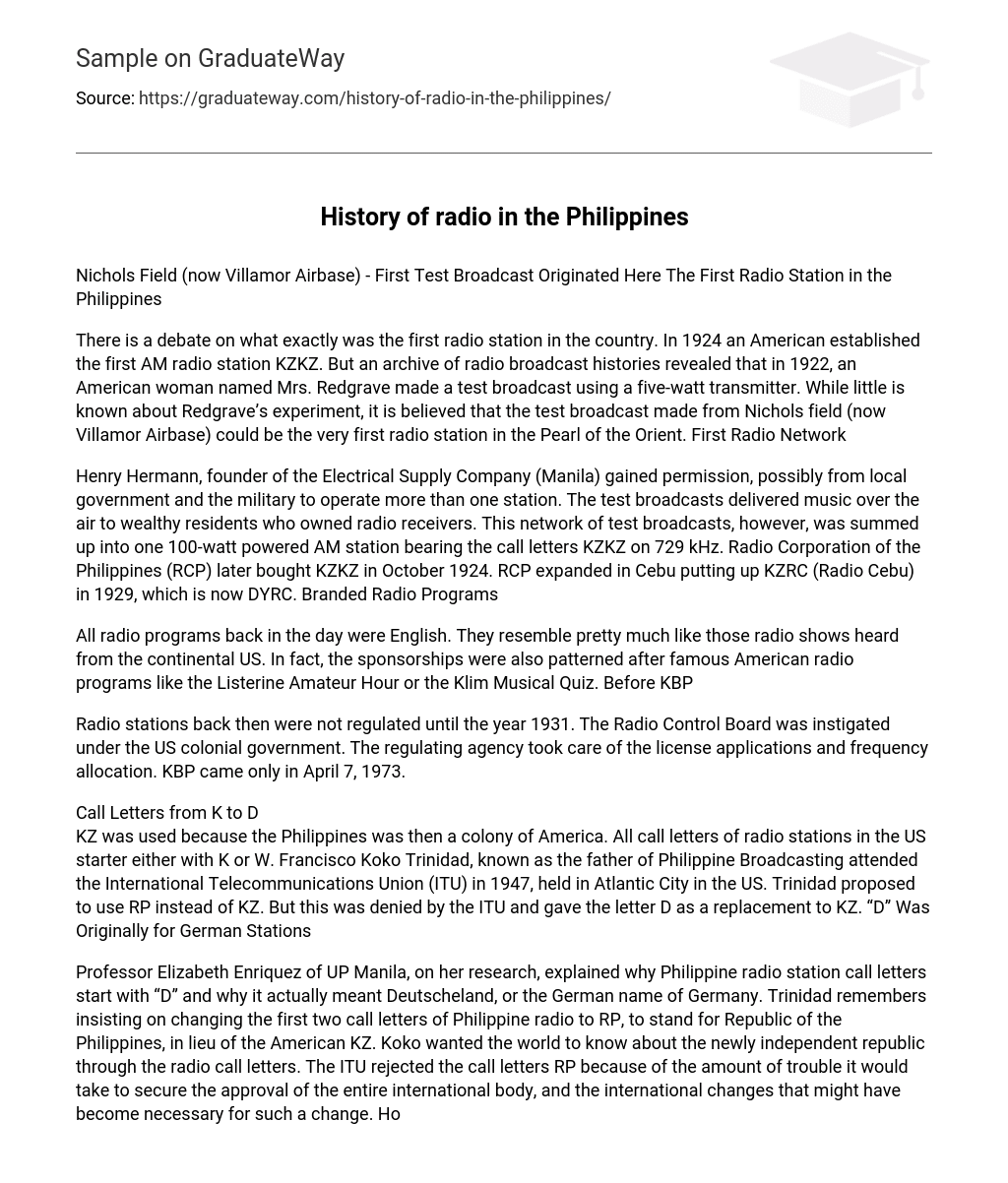Nichols Field (now Villamor Airbase) – First Test Broadcast Originated Here The First Radio Station in the Philippines
There is a debate on what exactly was the first radio station in the country. In 1924 an American established the first AM radio station KZKZ. But an archive of radio broadcast histories revealed that in 1922, an American woman named Mrs. Redgrave made a test broadcast using a five-watt transmitter. While little is known about Redgrave’s experiment, it is believed that the test broadcast made from Nichols field (now Villamor Airbase) could be the very first radio station in the Pearl of the Orient. First Radio Network
Henry Hermann, founder of the Electrical Supply Company (Manila) gained permission, possibly from local government and the military to operate more than one station. The test broadcasts delivered music over the air to wealthy residents who owned radio receivers. This network of test broadcasts, however, was summed up into one 100-watt powered AM station bearing the call letters KZKZ on 729 kHz. Radio Corporation of the Philippines (RCP) later bought KZKZ in October 1924. RCP expanded in Cebu putting up KZRC (Radio Cebu) in 1929, which is now DYRC. Branded Radio Programs
All radio programs back in the day were English. They resemble pretty much like those radio shows heard from the continental US. In fact, the sponsorships were also patterned after famous American radio programs like the Listerine Amateur Hour or the Klim Musical Quiz. Before KBP
Radio stations back then were not regulated until the year 1931. The Radio Control Board was instigated under the US colonial government. The regulating agency took care of the license applications and frequency allocation. KBP came only in April 7, 1973.
Call Letters from K to D
KZ was used because the Philippines was then a colony of America. All call letters of radio stations in the US starter either with K or W. Francisco Koko Trinidad, known as the father of Philippine Broadcasting attended the International Telecommunications Union (ITU) in 1947, held in Atlantic City in the US. Trinidad proposed to use RP instead of KZ. But this was denied by the ITU and gave the letter D as a replacement to KZ. “D” Was Originally for German Stations
Professor Elizabeth Enriquez of UP Manila, on her research, explained why Philippine radio station call letters start with “D” and why it actually meant Deutscheland, or the German name of Germany. Trinidad remembers insisting on changing the first two call letters of Philippine radio to RP, to stand for Republic of the Philippines, in lieu of the American KZ. Koko wanted the world to know about the newly independent republic through the radio call letters. The ITU rejected the call letters RP because of the amount of trouble it would take to secure the approval of the entire international body, and the international changes that might have become necessary for such a change. However, the ITU, which decided to punish Germany for using radio for propaganda and to advance the cause of Nazism, deprived Germany of its right to use the broadcast airwaves.
The ITU then gave the Philippines the right to use the call letter D (which had stood for Deutscheland, or the German name of Germany) From http://www.oldradio.com/archives/international/philippines.html So much has happened to the Philippine Radio industry since that historic 1922 test broadcast in Nichols field. According to a historian, the Philippines was the first Asian country to operate a radio station, ahead of China and even New Zealand. AM Radio stations used to be in English, now all announcers speak vernacular. The FM band, once dominated by American-sounding radio formats, are now favoring local sounds. American roots and a Deutsch call letter, yet little is left of these foreign influences.





